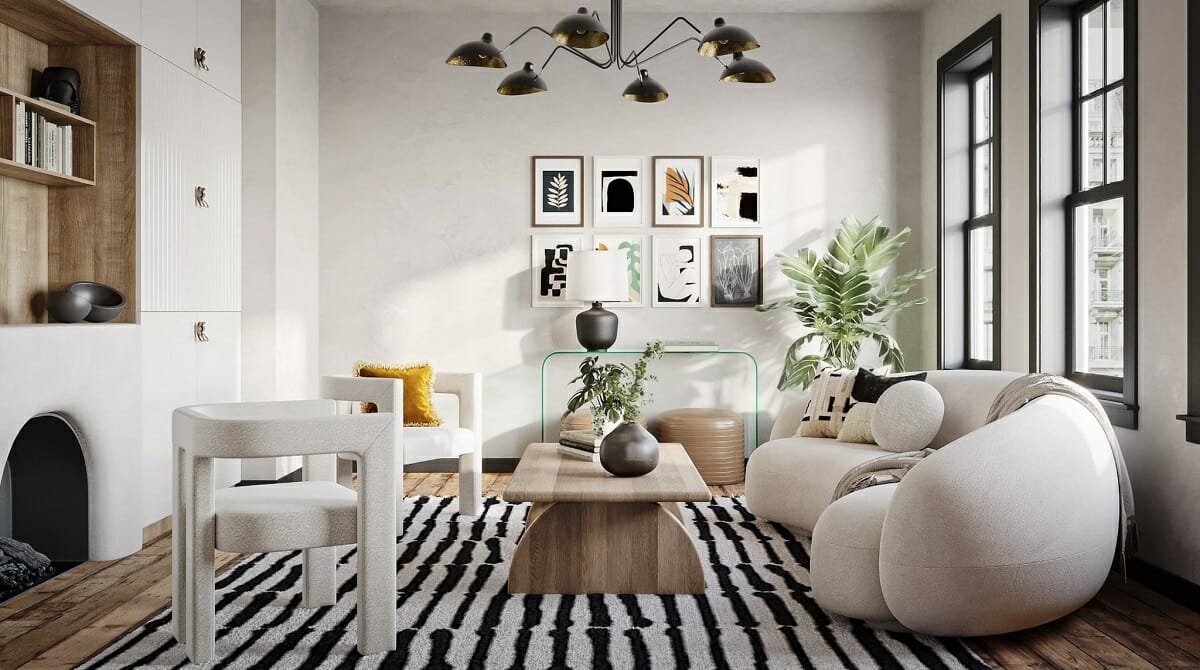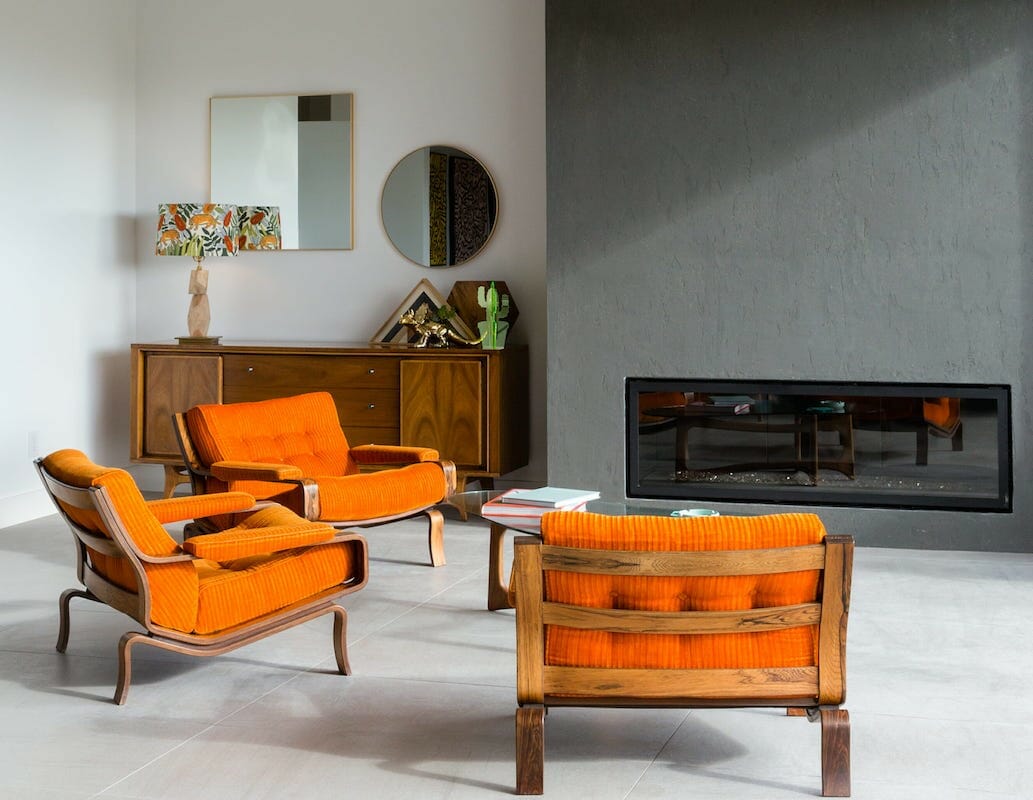Welcome to the fascinating world of Bauhaus house decor! The Bauhaus movement, emerging in the early 20th century, has left an indelible mark on architecture and design. Known for its focus on minimalist aesthetics that harmonize functionality and beauty, Bauhaus decor continues to influence contemporary interiors today. This article explores the principles of Bauhaus decor, guides you on how to implement these ideas in your home, and shares personal experiences to help you create a living space that is both stylish and functional.
The Origins of Bauhaus Design
The Bauhaus school was founded in 1919 by Walter Gropius in Weimar, Germany. It sought to bridge the gap between art and industry, emphasizing the creation of functional, affordable objects that satisfy both aesthetic and practical needs. The movement prioritized simplicity, clean lines, and an absence of unnecessary ornamentation, setting the stage for modern design.
Key Principles of Bauhaus Decor
- Form Follows Function: A fundamental tenet of Bauhaus, ensuring that the design of an object or space is directly related to its intended use.
- Minimalism: Emphasis on simplicity and reducing elements to their essential forms, promoting uncluttered spaces.
- Integration of Art and Technology: Encouraging the collaboration of artists and craftsmen with engineers to create practical objects that are also beautiful.
- Use of Modern Materials: Incorporating materials such as steel, glass, and concrete for a clean, industrial feel.

How to Incorporate Bauhaus Decor in Your Home
Transforming your home into a Bauhaus-inspired space may seem daunting, but with some strategic planning, it can be quite rewarding. Here are some actionable tips to guide you through the process.

1. Choose the Right Color Palette
The color palette in Bauhaus decor is typically basic yet striking. Neutral tones dominate, enhanced by bold primary colors. Here’s how to implement it:

- Walls: Opt for whites, greys, or beige as your base colors to create a serene backdrop.
- Accents: Use pops of red, yellow, or blue in decor items such as cushions, art pieces, or rugs.
2. Embrace Minimalist Furniture

Furniture in a Bauhaus-styled home should be functional yet visually striking. Here’s a brief comparison of traditional vs. Bauhaus-inspired furniture:
| Feature | Traditional Furniture | Bauhaus-Inspired Furniture |
|---|---|---|
| Design Complexity | Ornate and detailed | Sleek and simple |
| Material Use | Wood, upholstery | Steel, glass, leather |
| Functionality | Decorative purpose | Functional with aesthetic appeal |

Consider pieces like the Barcelona Chair by Mies van der Rohe or the tubular steel furniture by Marcel Breuer for authentic Bauhaus flair.
3. Use Geometric Shapes and Lines

Incorporate geometric shapes in furniture, art, and architectural elements. Consider using:
- Rug Patterns: Look for rugs featuring bold geometric designs.
- Wall Art: Hang art pieces that utilize shapes, lines, and primary colors to evoke the Bauhaus style.

4. Maximize Natural Light
Bauhaus design believes in the power of natural light to enhance spaces. Here are a few tips:
- Windows: Use large, unobstructed windows to bring in light.
- Mirrors: Strategically placed mirrors can reflect light and make spaces appear larger.
5. Create Open Spaces
Open floor plans encourage an airy feel, typical in Bauhaus design. Remove unnecessary partitions and opt for multifunctional furniture to maintain the flow of space.
Decorative Accessories for Bauhaus Style
Complement your interior with Bauhaus-inspired accessories:
Lighting Solutions
Lighting is crucial in creating the right ambiance. Consider these options:
- Pendant Lights: Simple, geometric pendant lights made from metal or glass.
- Floor Lamps: Tall, minimalistic floor lamps that do not overcrowd the space.
Textiles and Soft Furnishings
Textiles should harmonize with the overall design. Look for:
- Simplistic Patterns: Fabrics with geometric patterns or solid colors.
- Natural Materials: Wool, cotton, and linen are preferred for their sustainability and aesthetic quality.
Pros and Cons of Bauhaus Decor
Pros:
- Timeless and classic design.
- Focus on functionality reduces clutter.
- Encourages creativity through the mix of art and technology.
- Environmentally friendly materials promote sustainability.
Cons:
- May feel too stark for some people’s tastes.
- Finding authentic Bauhaus pieces can be expensive.
- Requires a specific color palette that may not fit all lifestyles.
Personal Experience: My Journey to a Bauhaus-Inspired Home
When I first discovered the Bauhaus style, I was captivated by its simplicity and depth. My home was cluttered with various styles, and it felt chaotic. After researching, I decided to embrace Bauhaus principles to create a serene environment.
I started by decluttering my space, focusing on keeping only items that served a purpose or brought joy. I chose a neutral color scheme for the walls and added small pops of color through vibrant artwork and decorative cushions. Gradually, I replaced my bulky furniture with minimalist designs that reflected the Bauhaus ethos.
The transformation was remarkable. I found that not only did my home look visually appealing, but it also felt like a peaceful sanctuary that fostered creativity and relaxation.
Frequently Asked Questions (FAQs)
What is Bauhaus decor?
Bauhaus decor refers to the design style originating from the Bauhaus school of design, emphasizing simplicity, functionality, and minimalism, using modern materials and geometric shapes.
How can I achieve a Bauhaus aesthetic in my home?
To achieve a Bauhaus aesthetic, focus on a neutral color palette, minimalist furniture, geometric shapes, maximizing natural light, and decluttering your space.
What are some famous Bauhaus furniture pieces?
Some famous Bauhaus furniture pieces include the Wassily Chair by Marcel Breuer, the Barcelona Chair by Ludwig Mies van der Rohe, and the tubular steel furniture designed by various Bauhaus artists.
Is Bauhaus decor suitable for small spaces?
Yes! Bauhaus decor is perfect for small spaces as it encourages minimalism and functional furniture design, making the area feel larger and more open.
Can I mix Bauhaus decor with other styles?
Absolutely! Bauhaus decor can be effectively mixed with other styles, especially minimalist or industrial designs, to enhance creativity while maintaining functionality.
Conclusion
The Bauhaus design movement offers timeless principles that can transform your home into a beautiful, functional space. By focusing on simplicity, minimalism, and the integration of art and function, you can create a living environment that is both elegant and comfortable. Whether you want to refresh a few rooms or undertake a complete redesign, embracing Bauhaus-inspired decor will undoubtedly lead to fulfilling results.
So, take the plunge and start experimenting with your space. You may be surprised by how adopting the Bauhaus philosophy can enhance your lifestyle, creating a unique balance of beauty and function in your home.